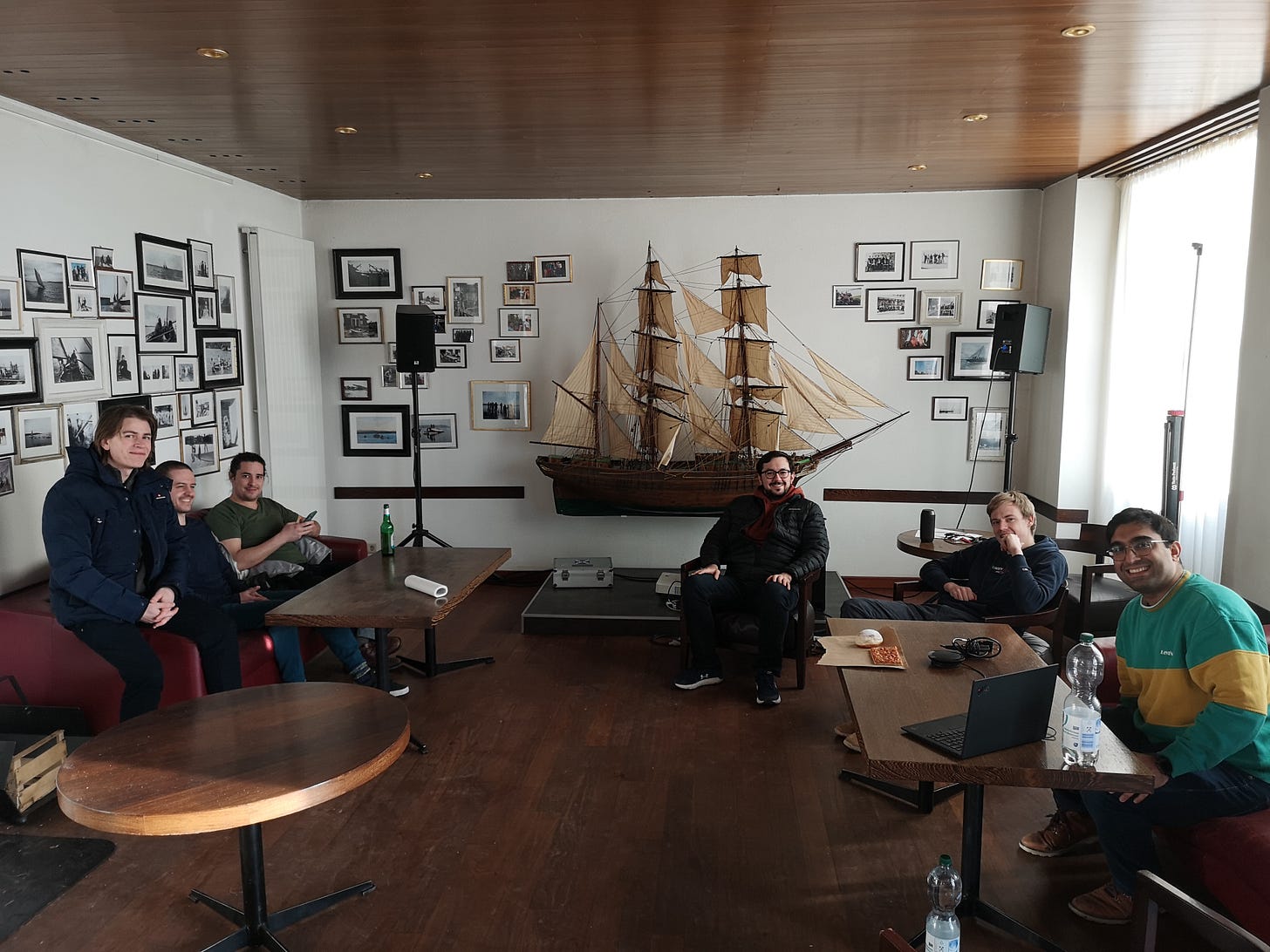🪐 ZenRetreat
Sorry for being late with the newsletter! Keep reading and you’ll see why.
Last week, we finally got (almost) everyone together in real life. It almost felt surreal in a (post-?)pandemic world to see actual human beings. For our location, we chose the beautiful Ammersee, an hour away from Munich:
We use the retreat to strategize in detail about where the company is headed, and lay out the bigger picture. For a lot of us, it was the first time meeting and it was very exciting to be able to do the classic startup stuff, with post-its and flipcharts and all that jazz:
Our goal was simple: Can all people in the team towards a single mission. We wanted to answer:
Who exactly is our target user?
What are their biggest pains?
How does ZenML solve those pains currently?
What can we build in the next 8 weeks that will prove the abobe hypothesis?
This all boiled down to defining our Minimal Viable Product (MVP). To guide us, we used the following image to visualize slicing the product pyramid:
A lot of people say the above is the “Minimal Delightful Product”, but these are all semantics. The point is, pick a target group, and build a minimally delightful experience for them to solve a ‘hair-on-fire’ problem. This is easy to say, but the execution is essentially what makes or breaks companies.
A lot of the guidance and inspiration of the sessions we conducted came from the awesome Y-Combinator channel on YouTube. Not all advice that they give maps to us directly, but breaking down their ideas with first-principles thinking and applying common sense modifications allowed us to create an atmosphere that was very fruitful. Its hard to summarize the details, but this last picture essentially summarizes our feelings towards the end:
Hopefully, this retreat laid the foundation for a renewed focus of ZenML, and there will be visible change in how we progress. Keep an eye out!
🤸🏻♀️Continuous Training and Deployment
ZenML 0.6.2 is now released after weeks of endless design discussions about our next big feature: Continous Training and Continous Deployment (CT/CD) for Machine Leraning Pipelines! You can now use ZenML to create a pipeline that continuously updates an external prediction service with the latest qualified model! MLflow by Databricks was the most popular model deployment tool according to our public feature voting, so we went ahead and used that as the first implementation of the CT/CD paradigm!
Incidentally, the above gif, created in Canva, took 2-3 hours to create but has been a great success. My LinkedIn post recieved more than 120 reactions and 8000 views, and I really think the only difference was this animation. Alexej, Alex, Baris, and Adam all contributed and it paid off big time. We are now incoorporating creating these animations into our regular release cycle!
Click here to try it yourself, and do let me know directly if you tried it out. We are actively looking for feedback. This is the start of enabling a new paradigm with ZenML, and we couldn’t be more excited!
🌯 Plausible vs Google Analytics
We had a chance to do a little A/B experiment when we decided to use Plausible to track website visitors alongside Google Analytics. For those who don’t know, Plausible is a company that facilitates anonymized, GDPR-compliant, and cookie-less analytics for web applications. That means no more banners like this:
Google Analytics requires a cookie banner, therefore, we were set up for a nice experiment to see how many people actually Accept or Decline cookies. The answer is unsuprising:
Yup, 401 vs 1987 visitors tracked. That is nearly a 5x difference! Even if you discount it becuase of duplicates, we can see that the majority of users on our website actually reject cookies (who can blame them?).
Its interesting because for us we do not do any fancy analytics on our website. The only metric we care about is a true reality of unique users coming in. Therefore, Plausible is a much better tool to measure that metric. Check out their guide on how to get set up here.
🍇Open-source KPI’s
James sat down and wrote a bad-ass blog about collecting open-source metrics with the KPI Collector. Do give it a read here!
Well, that’s all for this time. Don’t forget to share this substack, and give us a like if you can: It helps!
Cheers,
H












